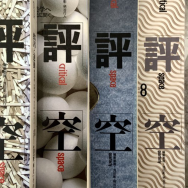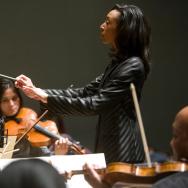When University of Chicago alum Paul Durica was researching his dissertation on hobos and tramps as figures in American literature, he kept discovering stories that didn’t quite belong in his scholarly work—but were too fascinating to keep to himself.
So in 2008, he founded Pocket Guide to Hell, a public history effort that took many forms—reenactments, performances, walking tours—and combined intellectual heft with, on occasion, pure silliness. (For instance: Chicago’s 1855 Lager Beer Riot was restaged as a dodgeball game.)
The project, which has reemerged after a multiyear hiatus as a monthly pub trivia event, reshaped his career plans. Instead of becoming an academic, he wanted to find ways to bring history to wider audiences. Today, after four years at Illinois Humanities, he is director of exhibitions at Chicago’s Newberry Library.
In the following Q&A, Durica, AM’06, PhD’13, discusses what he learned at UChicago, what makes for a great museum exhibition, and oft-overlooked tidbits of Chicago history.
Did you imagine this would be your career path when you started your Ph.D. program in English Language and Literature?
Not at all. I anticipated I would write my dissertation and find a teaching position somewhere. But as I was getting to the dissertation-writing phase, that’s when I began to do more of the public history work, and I found it to be really appealing and much more in sync with what I wanted to do.
Although I didn’t set out to get here, I was making choices while I was at the University that helped me arrive at this place. One was beginning to do projects on my own and forming relationships with different cultural institutions across the city. When I decided that there might be a career in this for me, I had some relationships in place.
I also benefited from having a dissertation committee that was understanding and encouraging of this work, and saw value in it. They supported me in exploring other opportunities and ultimately helped me to end up where I am.
So, I remain grateful for that. I don’t think the work I do now, whether at the Newberry or prior, would be nearly as strong without the experiences I had at the University of Chicago.
What makes a great museum exhibition?
A strong, relevant, captivating story that has people at its center but then uses collection items as a way of adding physicality and tactility to that story. You’re not encountering just the narrative—you’re also encountering objects that remind you the story actually occurred in space and time.
For me, the most compelling exhibitions always have some “aha” item that changes your perspective on whatever the story is. I can give an example from the Newberry that precedes my time here: an exhibition on Herman Melville that coincided with the bicentennial of his birth. One of the galleries had a letter he wrote from Illinois—he was visiting an uncle who lived here—in which he thought about becoming a Mississippi riverboat sailor rather than making the decision he ultimately did, which was to go out on a whaling voyage.
It changed the way I thought about Melville, because I never thought of him as having any connections to the region I call home. It also made me think about how his life and his writing could have taken a very different direction if he had made a different choice.
Do you have a favorite Pocket Guide to Hell event?
I still have a very special place in my heart for the first one, because it was the silliest by far: we marked the 24th anniversary of the broadcast of The Mystery of Al Capone’s Vaults, which was a live television event hosted by Geraldo Rivera. We did that at the now-defunct Op Shop in Hyde Park, which used to be a credit union and had a vaultlike space in the basement. We got to explore this crazy pop cultural moment, but also to provide the historical context around it.
The other one is the 125th anniversary reenactment of the Haymarket Affair, because we did it at the original site, to scale, with thousands of people. Being able to do it on that particular anniversary at that particular site so you could really experience what the moment was like—that remains pretty memorable.
Do you ever get to just browse the Newberry archives?
I love every opportunity I have to look through the collections and find things. I did have one of those “I have to share this” moments recently.
The Newberry, like many institutions, was marking the 150th anniversary of the Great Chicago Fire. We have among our materials an amazing collection of stereoscope cards—which are kind of like a Victorian ViewMaster—that belonged to the poet and writer Carl Sandburg.
There’s a subset of scenes of the Great Chicago Fire, and I’m flipping through them, and it’s ruined building after ruined building—and suddenly, I come across this image of a cat. I thought, “What is this doing here? It must be misfiled.” But I turned the card over and there’s a little description on the back saying, “This is the Post Office cat.”
Apparently, in the 1870s, the clerks at the Post Office in what is now the Loop had a pet cat. In the midst of the fire, they weren’t able to get the cat out of the building. But a couple days later, one of the clerks went back to explore the ruins and see what had happened and found the cat alive. So they decided to photograph it.
It’s one of those stories about the fire that was forgotten over time, but we were able to weave it into some of the work we were doing around the anniversary. It’s moments like that that I love.
You’re a fount of amazing Chicago history knowledge. What’s an example of a person or story you wish more people knew about?
I’ll give you a serious one and a more playful one.
A figure I think people should know more about is Lucy Parsons, who was a pioneer in the labor movement. She had a tremendously long career that extended from the end of the Civil War all the way to her death in 1942. The fact that she was a formerly enslaved woman who after emancipation devoted herself to the rights not just of the formerly enslaved, but also to the rights of women and workers, makes her a singular figure.
A weirder story I came across recently: I was reading a book called Bullets for Dead Hoods: An Encyclopedia of Chicago Mobsters, c. 1933, which is basically an A-to-Z encyclopedia of underworld figures from the early 1930s. In one of the entries, there’s reference to something called “the clairvoyant trust.” So I started doing some research.
Around 1910, there was an attempt to organize all of the psychics, mediums, fortune-tellers, and tarot readers in the city so they could share information and fleece people more efficiently. There was one guy who was running it and took some money off the top, and it eventually got exposed. This is classic Chicago.
—This story was first published by Tableau, the magazine of the Division of the Humanities

